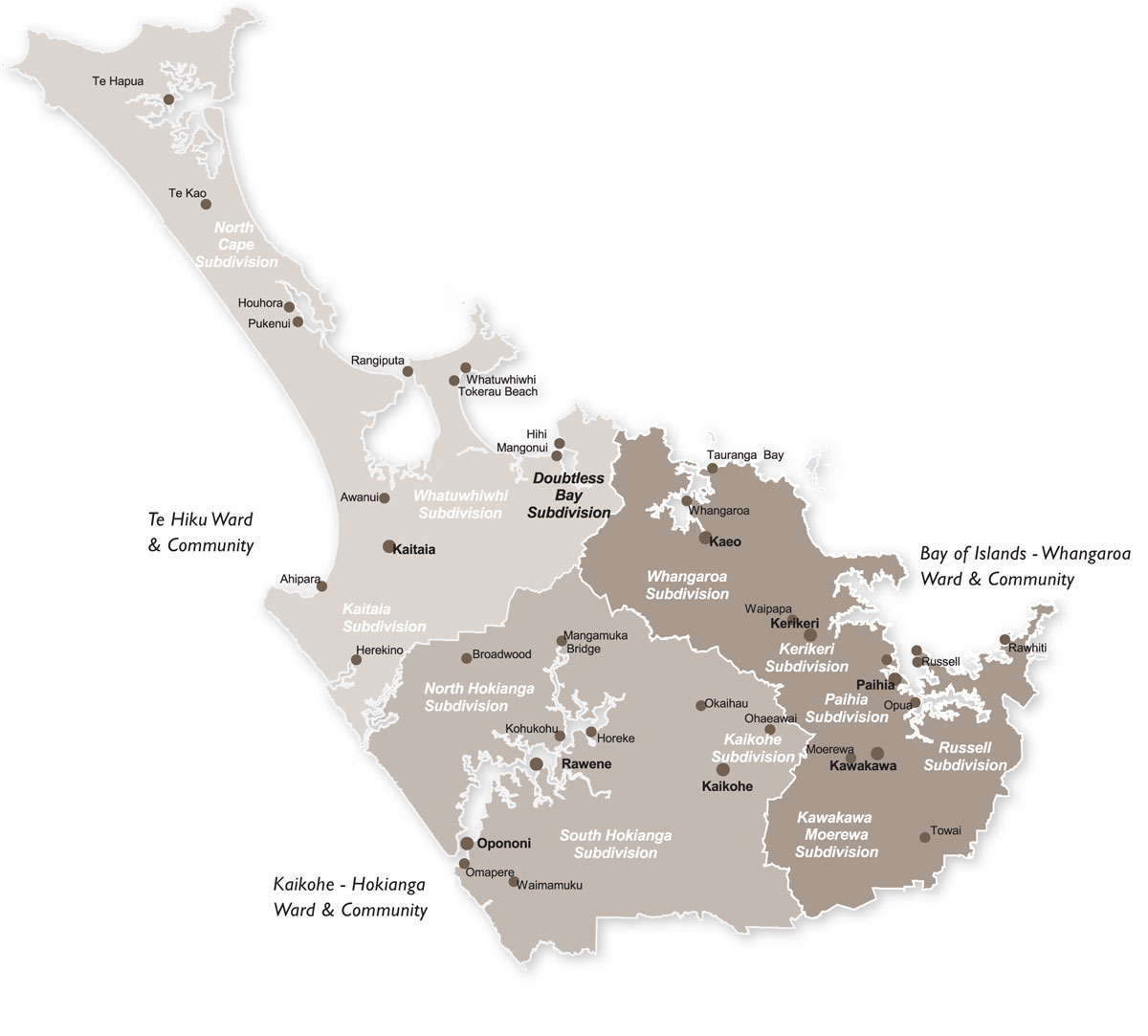The Far North is the most northerly district in New Zealand, sharing its southern boundaries with Kaipara and Whangarei districts.
Together, the 3 districts make up the Northern region. With 7,324 km2, the Far North district is the largest of the 3 districts, contributing 54% of the land area and 38% of the region’s population. This land area includes a significant amount of unrateable land belonging to Department of Conservation and Māori. The number of rateable properties is 35,615. The Far North District Council is the largest Territorial Authority in terms of land area in the North Island. The only 2 areas that are larger are both Unitary Authorities: Auckland and Gisborne.
The district has 2,347km’s of coastline which includes offshore islands and 9 major harbours. Most of the land is rural; resulting in 15 widely dispersed small urban settlements with populations of between 500 and 6,000 people. The 3 service towns of Kerikeri, Kaikohe and Kaitaia have the largest permanent populations. Home ownership in the Far North is higher than the average for New Zealand and rental costs are lower compared with the national average.
The district in December 2012 had a 21,233 strong labour force with a varied skill base, in part mirroring the district’s diverse heritage, culture and knowledge. This diversity gives the district’s people the opportunity to make lifestyle choices. The district was serviced by 7,423 local businesses employing 17,580 persons. The health and community sector employs the largest percentage of workers at 13.8%.
The 2013 census put the usual resident population of the Far North district at 55,734. In the 2006 census, 39.6% of the district’s population indicated that they belonged to the New Zealand Māori ethnicity group. This compares with a national average for Māori ethnicity of 14%. Between 2001 and 2006, the Far North’s population grew by 2.3% with substantially higher levels of growth in many settlements on the eastern seaboard. In addition, the Far North receives a large influx of visitors during the summer season with population conservatively estimated at around 110,000 at any one time. Drawn by the district’s beautiful beaches and harbours, these visitors more than treble the population of some coastal settlements at peak times.
At the last census there were about 16,000 families in the district of which approximately half have children. The average household size was about 2.7 people, which equates with the national average.
Major contributors to GDP in both 2011 and 2012 were the retail and wholesale trade followed by agriculture (including forestry and horticulture). GDP for year ending December 2012 was 1,069 million.




